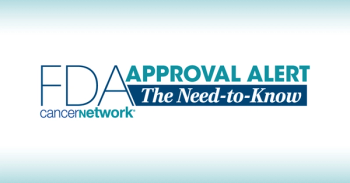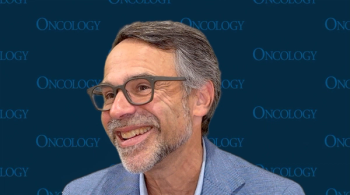
Changing the Pancreatic Cancer Landscape Via Liquid Biopsy
The relatively inexpensive nature of liquid biopsy may allow for more frequent screening among individuals who are at risk of developing pancreatic cancer.
If the use of liquid biopsy in pancreatic cancer continues to be assessed as part of prospective studies, this detection method may “dramatically” and “profoundly” impact the treatment field in the future, according to Ajay Goel, PhD, AGAF.
Goel, founding chair of the new Department of Molecular Diagnostics and Experimental Therapeutics, founding director of Biotech Innovations at Beckman Research Institute, and associate director of Basic Science at Comprehensive Cancer Center of City of Hope in Duarte, California, discussed the potential next steps for researching the role of liquid biopsy in detecting pancreatic cancer with CancerNetwork®. He spoke in the context of a presentation he gave at the 15th Annual Ruesch Center Symposium that focused on this screening strategy for patients with pancreatic cancer.
Regarding the potential benefits of liquid biopsy, Goel highlighted how these tests are relatively inexpensive, which may allow for more frequent screening intervals among individuals who are at risk of having pancreatic cancer. Additionally, this non-invasive blood-based assay may also help detect cancers at earlier stages of disease.
Transcript:
There’s a lot of excitement and enthusiasm for liquid biopsy, not just for pancreatic, but for many other cancers and diseases. If we are right, if these tests continue to be prospectively validated, and if they perform the way they are performing now, I think this is the future. We will change the landscape of cancer dramatically and profoundly because we can begin to use this test in patients much earlier.
The second aspect is if these tests are relatively inexpensive, that means we can use them a lot more frequently, especially for those who have any family history or other risk features. Rather than imaging them every 3 years, 5 years, or 10 years, we can use them annually or possibly even more [often]. There’s a lot of enthusiasm that we can use these tests in the coming years for shifting the diagnosis of the disease from a later diagnosis to earlier and earlier stages of disease. If you can do that effectively, this is not only going to help diagnose the disease but also possibly cure a lot of these patients and help them.
Now, [whether] we can use them for response monitoring, disease monitoring, or seeing the efficacy of therapeutics are other exciting areas. Once the patient is undergoing treatment, we need tools and techniques that can help monitor whether the patient is responding to that specific therapy. We have done a lot of work in this regard, and others have done [work] as well, and the liquid biopsy is going to play a major role in that arena as well.
Reference
Goel A. Liquid biopsy biomarkers for the early detection of pancreatic cancer. Presented at the 15th Annual Ruesch Center Symposium; November 21-23, 2024; Washington, DC.
Newsletter
Stay up to date on recent advances in the multidisciplinary approach to cancer.

















































































